Hello! I'm Sri Juneja and this is my children’s book recommendation newsletter, Readable Moments Book Club. You can subscribe by clicking on this handy little button:
Let’s get going…
In early May, my family and I took a couple of weeks off to visit Italy and Denmark. We spent the first 3 days of our Italian adventure in Milan and the rest of our time was spent in Florence with little day trips to other towns in Tuscany. I had been to Milan before but it was my first time in Florence and I was EXCITED. The reel in my head was playing an Italian holiday full of la dolce vita and splendor of A Room With A View or Under The Tuscan Sun. Now imagine the Roadrunner dropping an anvil on Wile E. Coyote’s head—that was what it felt like wrangling a jetlagged child.
Even though it looked different from what I imagined we did get to have our great Italian adventure—our pace of exploration was slower which meant we were more attuned to how the locals lived and there was a lot of magic in the little moments. My heart filled to overflowing ambling aimlessly with my family through the streets of Florence, cobblestone clacking beneath our feet, oohing and aahing as we passed centuries-old architecture, quaint artisanal shops, and heaps of gelato beckoning us from beneath their glass cases.
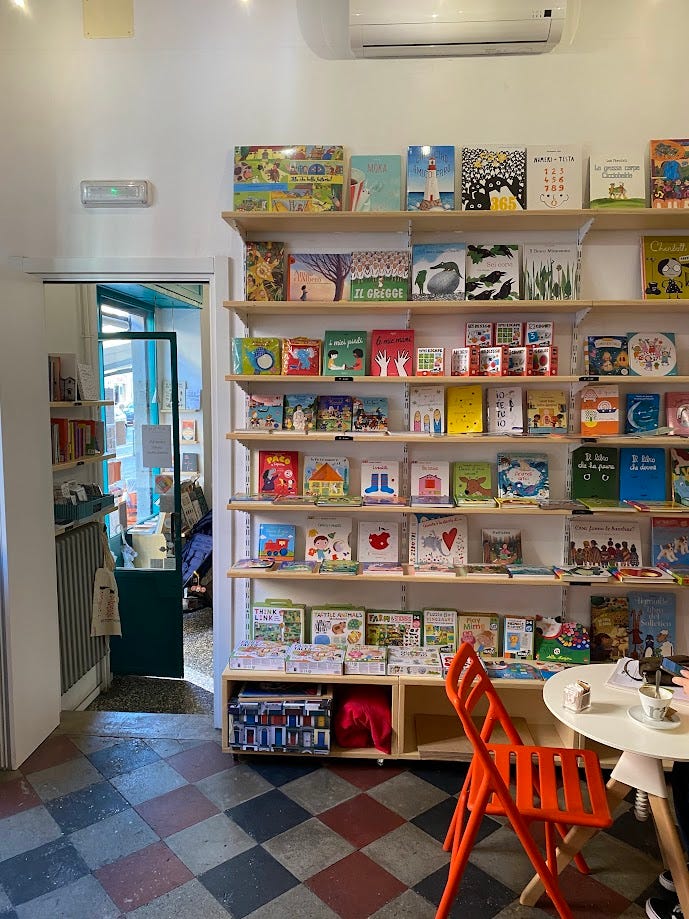
What really struck me as we moved around big cities and small cities was the availability of bookshops. They were everywhere! And not only were they everywhere but they were in places that would have been incredibly expensive commercial spaces if they had been in the US. In Milan, Libreria Bocca, the oldest bookshop in Italy, is nestled amongst luxury storefronts like Versace and Gucci at Galleria Vittorio Emanuele II. And if you keep walking down the arcade in the Galleria, you’ll find yourself standing in front of La Feltrinelli, a big bookstore chain, with an excellent selection of English books as well.
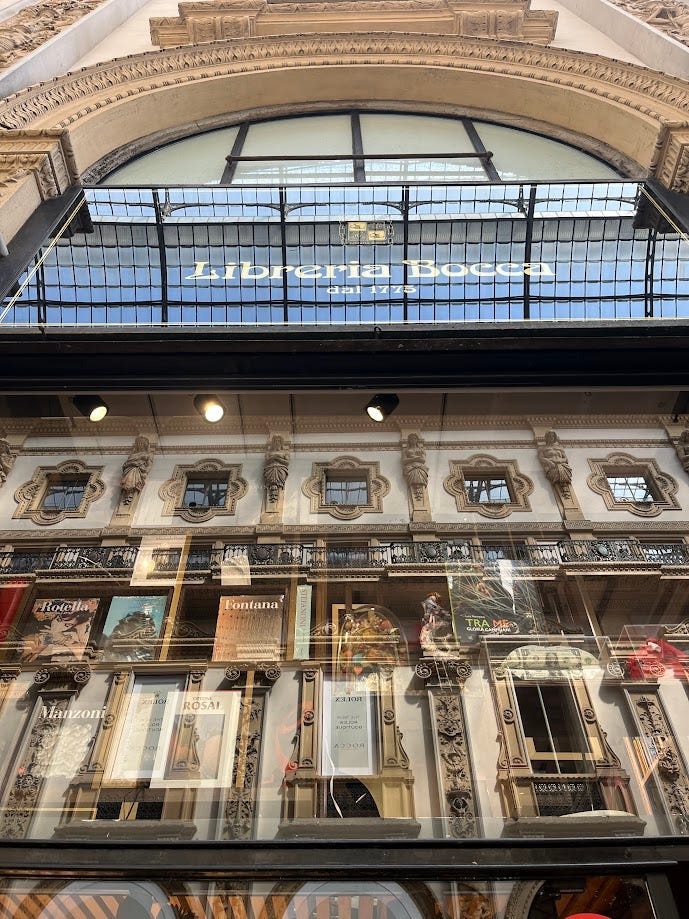
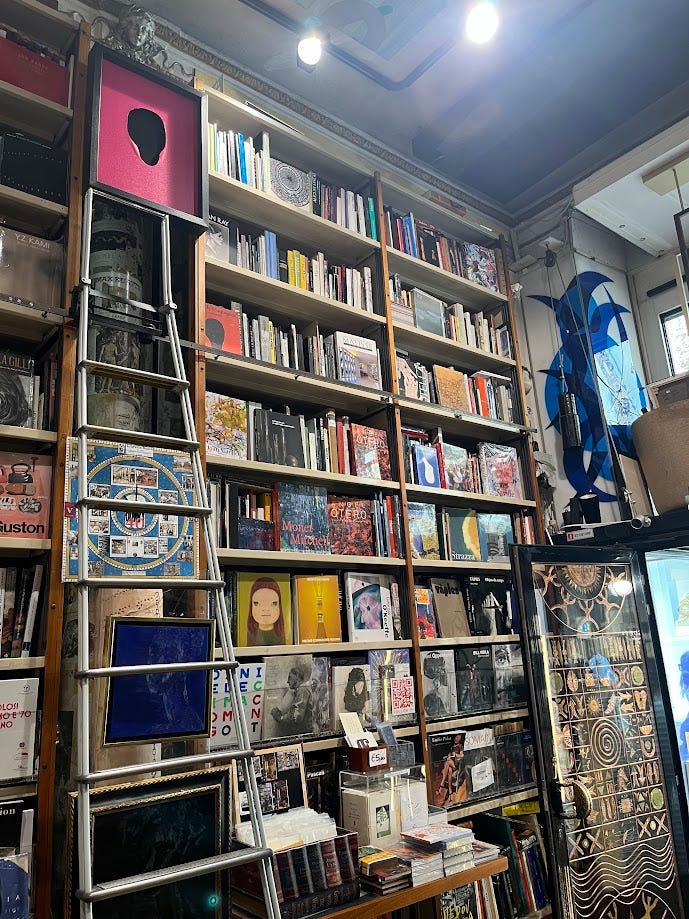
As soon as we arrived in Florence, we were greeted by a large La Feltrinelli store at the train station. And that felt like an ironic symbol as we found ourselves on the small zig-zagging streets of the city center, stumbling from one tiny bookshop to the next. We saw bookshops with religious texts, secondhand books, English books, and even rare book collections. Each bookshop sighting felt like a little revelation amongst the bustle and clamor of tourism.
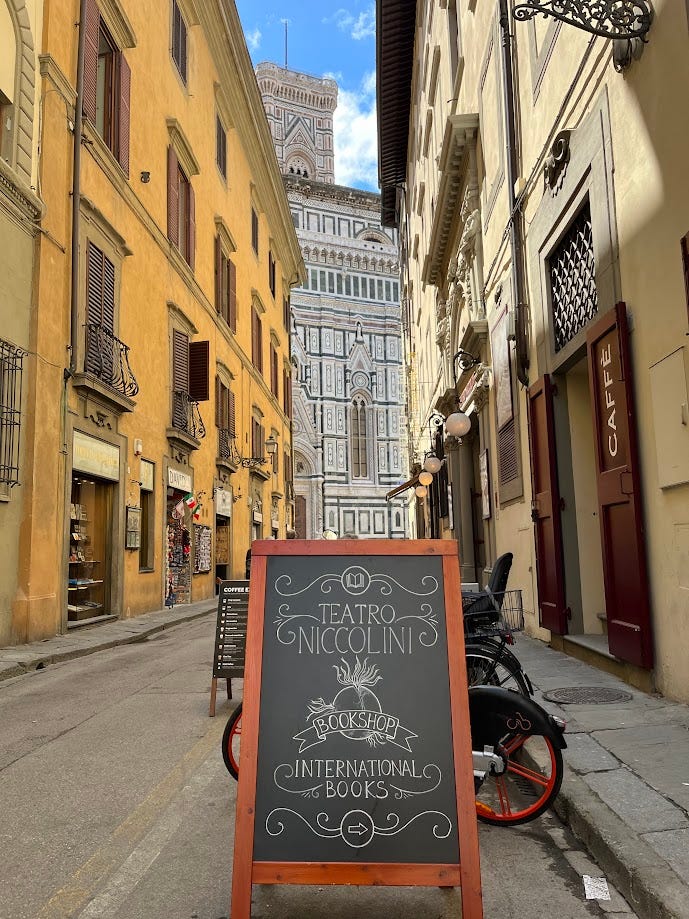
It got me wondering about the library culture and, after some investigation, I found two English-language libraries that were particularly interesting: The Children’s Lending Library of Florence and The British Institute of Florence Library. Of course, I had to visit.
Across the river Arno, the British Institute of Florence is posh and dignified and clearly designed to encourage cultural exchange between the Brits and Italians. The Institute hosts many events open to the public and also provides courses so English-speakers can learn Italian. They have a few rooms dedicated to a fairly substantial collection of books. When I visited, I wasn’t able to spend much time since they were closing off the rooms for a private event. What I was able to see was breathtaking. Three walls with floor-to-ceiling bookshelves heaving with English books on art history, Italian history, travel, memoirs, etc. And on the far wall, overlooking the street, were beautiful glimpses of the river Arno and the very heart of Florence.
Of the two libraries we visited, my kid loved the Children’s Lending Library (surprise surprise) and was loathe to go when it was time to leave. This tiny little library is just a few blocks away from the Santa Maria Novella train station and tucked away in the basement of the beautiful St. James Episcopal Church. Only open twice a week for 2 hours, it’s a tight window, especially with kids. But, in its own way, it actually works out for the best—having such specific, limited hours means these kids and their families get to know one another and build community.
Operating since 1973, it’s entirely volunteer-run and it’s evident it’s a labor of love. I asked one of the volunteers about how they maintain such a large volume of books and they mentioned it was almost all donations. As English-speaking families left Florence, they would donate their book collection to this little library. It’s clear from the collection that these books have been well-loved; it was an honor to leaf through them wondering which pair of dimpled hands had held this before me and where those hands were now. It left me wanting to move to Florence just so we could leave and donate our books and leave a piece of us behind in this magical city.
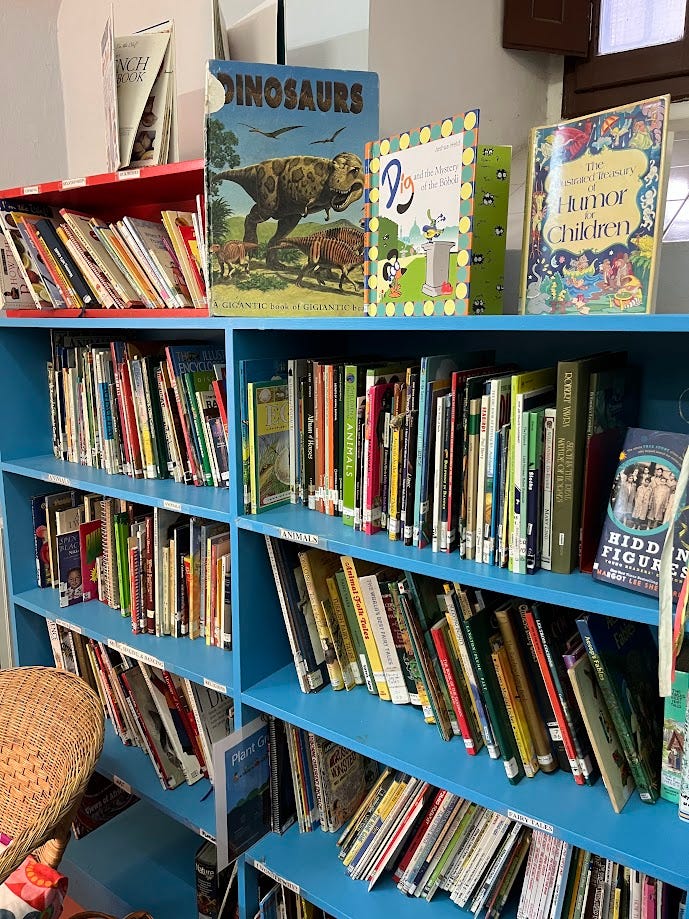

Even after returning back home, I couldn’t get the curiosity about Italian reading culture and raising kids in that culture out of my head. Before we even returned, I had texted my friend, Giulia, someone who was born and raised in Italy before moving to the US almost a decade ago, to discuss my observations.
When we met after I returned home, I peppered her with questions, and she shared with me her own experience. It became apparent that while some things are similar, some are also very different. In Part 2 of this series, I’ll share more about the conversation I had with her and how raising reading kids in Italy is a little different than raising reading kids in the United States.
Have you discovered a bookshop on your travels? Drop a comment and share where and what made that bookshop so memorable!
Up next week…
A brief summer break to celebrate July 4th. I hope you indulge in every good summer thing. For me, that will mean lots of corn on the cob, watermelon, and picnics in the park.
The next (and final) part of the Italy series—all about reading culture and raising readers in Italy and how it differs from the United States—will come out the following week.
Happy reading!
Did you like this newsletter?
Then you should subscribe here:





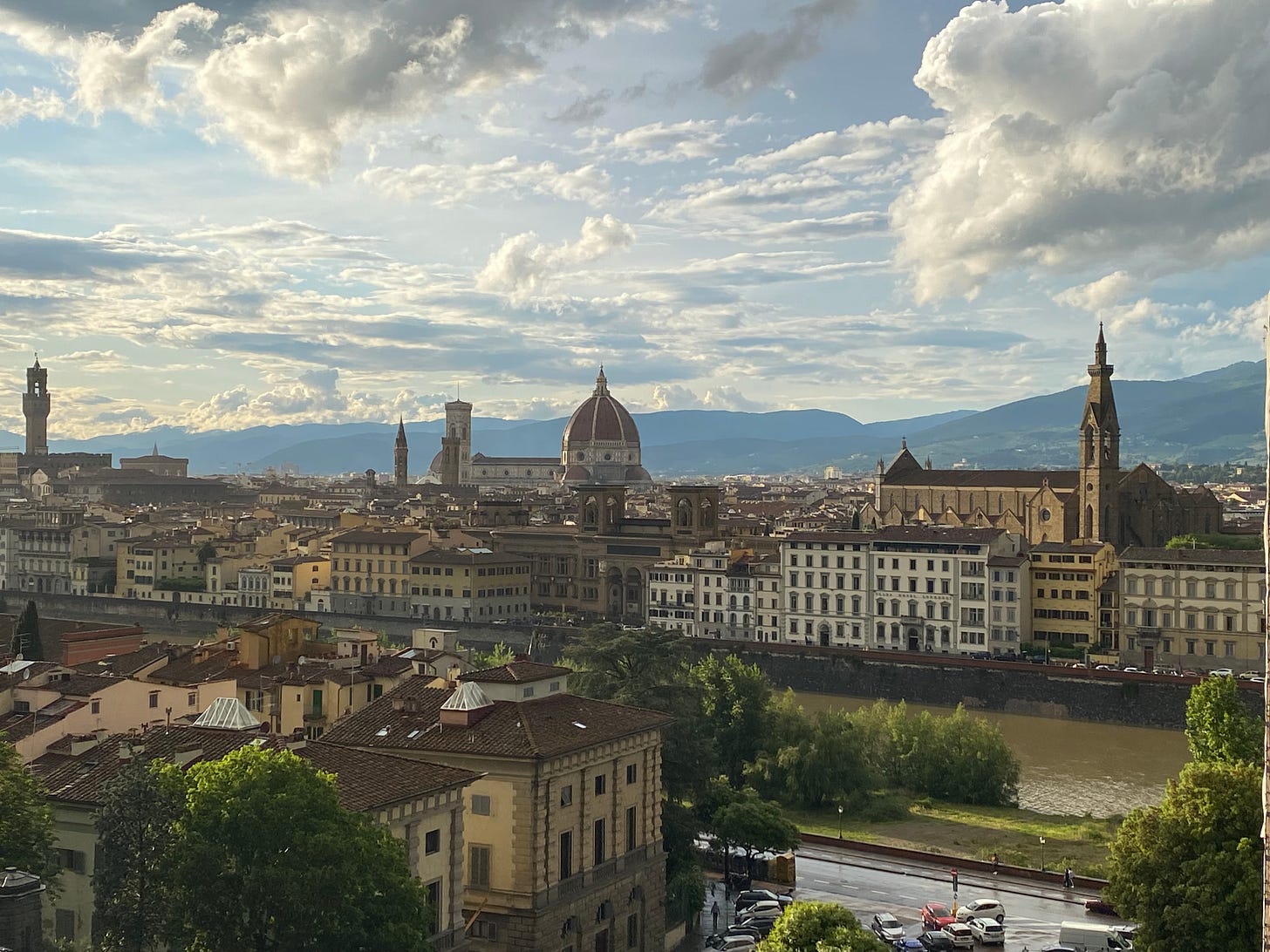

You gave me an idea- to do this with bakeries and bookstores at home.
I found a bookstore in Paris. Slowly exploring the shops and stumbling upon the bookstore was one of the highlights of my trip.